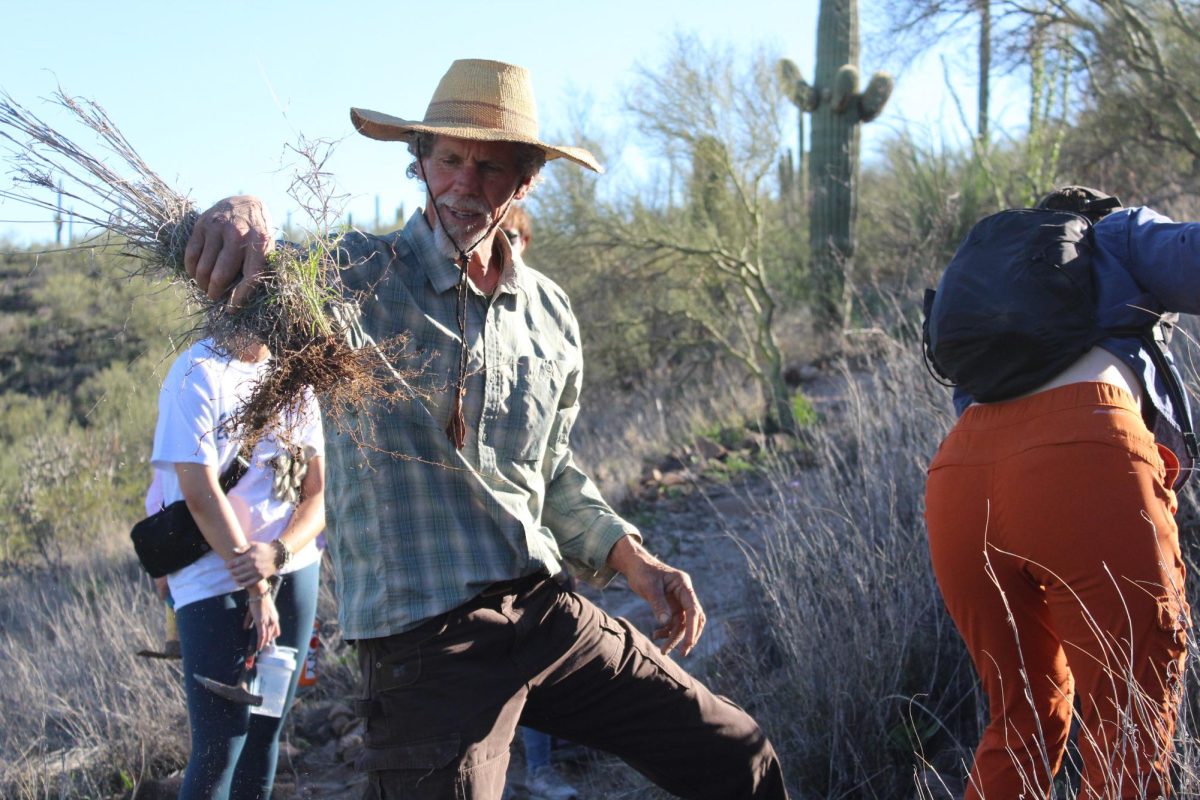Drought threatens Arizona’s future and researchers have their eyes to the sky and their hopes in the clouds.
The idea is to boost the Colorado River flow by building snowpack and rainfall by seeding clouds. So far, researchers seem pleased with the results.
Water augmentation efforts are not new, and there are multiple options that states can use to increase their amount of drinking water from importing it to the much more expensive desalinization process.
“There are so many different ways you can augment the river,” said Tom Ryan, a resource specialist with the Metropolitan Water District of Southern California who serves on the board of the North American Weather Modification Council and the Weather Modification Association.
But out of all the programs to augment the water supply, none quite captures the imagination like cloud seeding, also known as weather modification.
Discovered in 1946 by Vincent Schaefer, cloud seeding is the attempt to enhance the amount of precipitation a cloud would naturally produce on its own. Particles are released into targeted clouds to provide a nuclei, the “seed,” for moisture to condense around. The most common particles used are silver iodide, dry ice and more recently salt.
“[Silver iodide] is very good at forming ice,” said Armin Sorooshian, an associate professor at the UA, who studies and conducts research on aerosol particles in the atmosphere.
Silver iodide can mimic the structure of a snowflake, which makes it ideal for attempts to increase snowpack. The Weather Modification Association asserts that research shows silver iodide has no negative environmental effects.
Cloud seeding can be used to produce more snowfall or rainfall in a specific area. It enhances what is already there rather than creating new clouds, a common misconception.
According to Ryan all seven states within the Colorado Basin—California, Arizona, Utah, Nevada, Colorado, New Mexico and Wyoming—participate in some form of cloud seeding to augment the river’s water supply.
“The cooperative nature of it is what’s been working well,” he said.
Cloud seeding takes place in the upper basin of the Colorado River to grow snowpack, and increase the runoff into the Colorado River.
The Central Arizona Project, an aqueduct that diverts water from the Colorado River into central and southern Arizona, has allotted $150,000 of its 2014-2015 budget to weather modification efforts in the Colorado Basin.
“[Arizona is] currently participating, but we haven’t been leading the charge,” said Nancy J. Selover, Arizona’s state climatologist and a professor at Arizona State University.
There are two main ways to seed clouds, by plane and by ground-based generators. Plane-based seeding is done by shooting the particles directly into the cloud, while ground-based generators release particles into the air as the targeted clouds pass overhead.
The CAP primarily funds ground-based generators as they are more cost effective. Seeding using planes is known to be more accurate, but also more expensive and dangerous as pilots fly into stormy weather.
According to Ryan, cloud seeding programs have been expanding in both frequency and location over the past 20 years that he’s been working in the field.
One of the reasons for its popularity is its cost-effectiveness.
“It’s really cheap,” said Mohammed Mahmoud, a planning analyst with the CAP. “One of the cheapest ways to augment the water in the system.”
According to a nine-year study released last year by the Wyoming Weather Modification Pilot Project, a seeded cloud produces five to 15 percent more precipitation than a non-seeded cloud under ideal conditions. The range can be effected by geographic differences from site to site and other variables.
This may seem like a modest addition, but not to drought watchers who know every drop counts.
“A 10 percent increase is a significant amount of water,” Selover said.
More importantly, the study showed that cloud seeding is a viable option.
“It does work, it does increase the water supply,” Mahmoud said.
But it is difficult to determine exactly how much more a seeded cloud produces because of difficulties measuring the increase, and proving that it was the seeding that caused the increase in the first place.
There are also plenty of places for things to go wrong during the cloud seeding process, creating a large amount of uncertainties, according to Ryan. From getting the particles into the proper cloud to it snowing in the target area, missing any step in the process means that the seeding could not be successful.
Proper conditions also have to be met by prospective clouds, which includes the proper temperature, height and path of the cloud.
And even in the case of a successful seeding, science can’t truly control the weather.
“A potential downside to [cloud seeding] is creating snow for someone who doesn’t want it,” Selover said. “You don’t know where the clouds are going to go.”
Annie Dickman is a reporter for Arizona Sonora News, a service from the School of Journalism with the University of Arizona. Follow her on Twitter.








